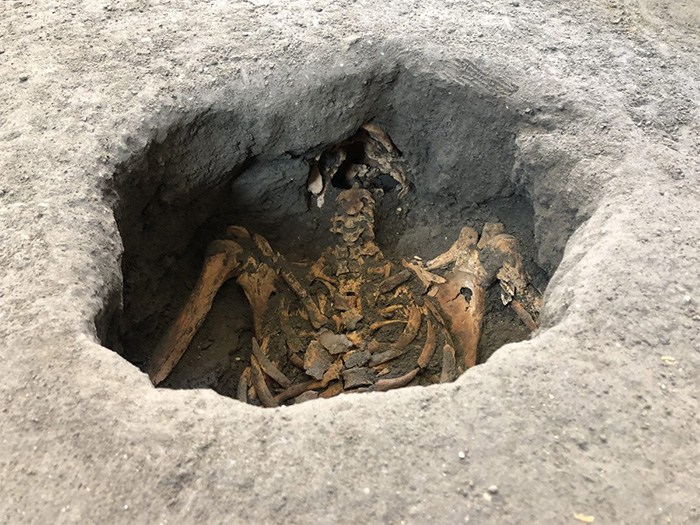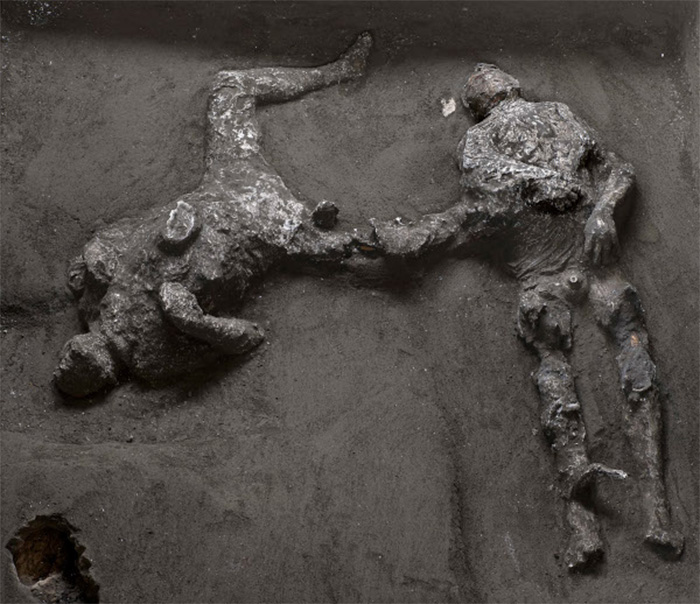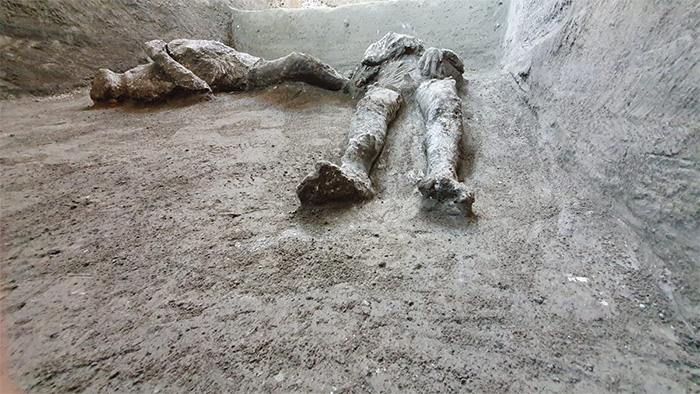The remains of two individuals who died during the eruption of Vesuvius have been found at a suburban villa near Pompeii.

The skeletons were removed and analysed before plaster casts were created of the voids. [Images: Luigi Spina, @luigi.spina.photographer]
The large villa is located in Civita Giuliana, a suburb 700m north-west of Pompeii’s city walls, where excavations in 2017 uncovered several service areas belonging to the villa, including the remains of three harnessed horses in the stables (CWA 90). The most recent excavations in the residential part of the villa began in January 2020 and have recently discovered two human skeletons near a cryptoporticus (a covered passageway).
The individuals were found in a side-room off the cryptoporticus, in a space 2.2m wide, currently of undetermined length. It is known to have had a wooden floor, due to holes in the walls which would have held the beams, but the room was largely destroyed by collapsing masonry, and underneath this was a layer formed by the pyroclastic currents typical of the Vesuvius eruption.

The skeletons were found underneath two voids in the layer of hardened ash, where the individuals had been submerged by the pyroclastic flow. After their discovery, parts of the bones were removed and analysed, and plaster casts of the voids were made using the technique developed by Guiseppe Fiorelli in 1863.
The casts revealed the shape of the bodies of the two victims lying on their backs, facing upwards, entombed in a 2m-thick layer of the same grey ash found in many buildings in Pompeii. It appears that they died when the room was flooded by a second pyroclastic flow in the early hours of 25 October AD 79, which came after a brief period of quiet following the initial eruption, during which survivors at Pompeii – and probably at Civita Giuliana – attempted to flee.
The first individual appears to be a man aged between 18 and 25 years old, around 156cm tall. He was found with his head tilted back and his teeth and skull visible, wearing a short tunic, the imprint of which is visible on his lower stomach and suggests that it was made of wool fibres. A series of vertebral compression fractures, unusual in a man of his age, has been interpreted as evidence of hard manual labour, perhaps suggesting that he was a slave.
The other individual is also male, older and taller than the first, between 30 and 40 years old and approximately 162cm tall. He appears to have been wearing more intricate clothing, as the fabric imprints underneath his neck and close to his sternum show evidence of a woollen mantle that stopped at the left shoulder, while a different fabric imprint on his upper left arm was made by a tunic that seems to have extended to the pelvic area. Perhaps, then, he held a more elevated status than his companion.


Plaster casts of the two individuals revealed that they were lying on their backs, having been killed by the second pyroclastic flow from Vesuvius.
This article appeared in issue 105 of Current World Archaeology. Click here for more information about subscribing to the magazine.